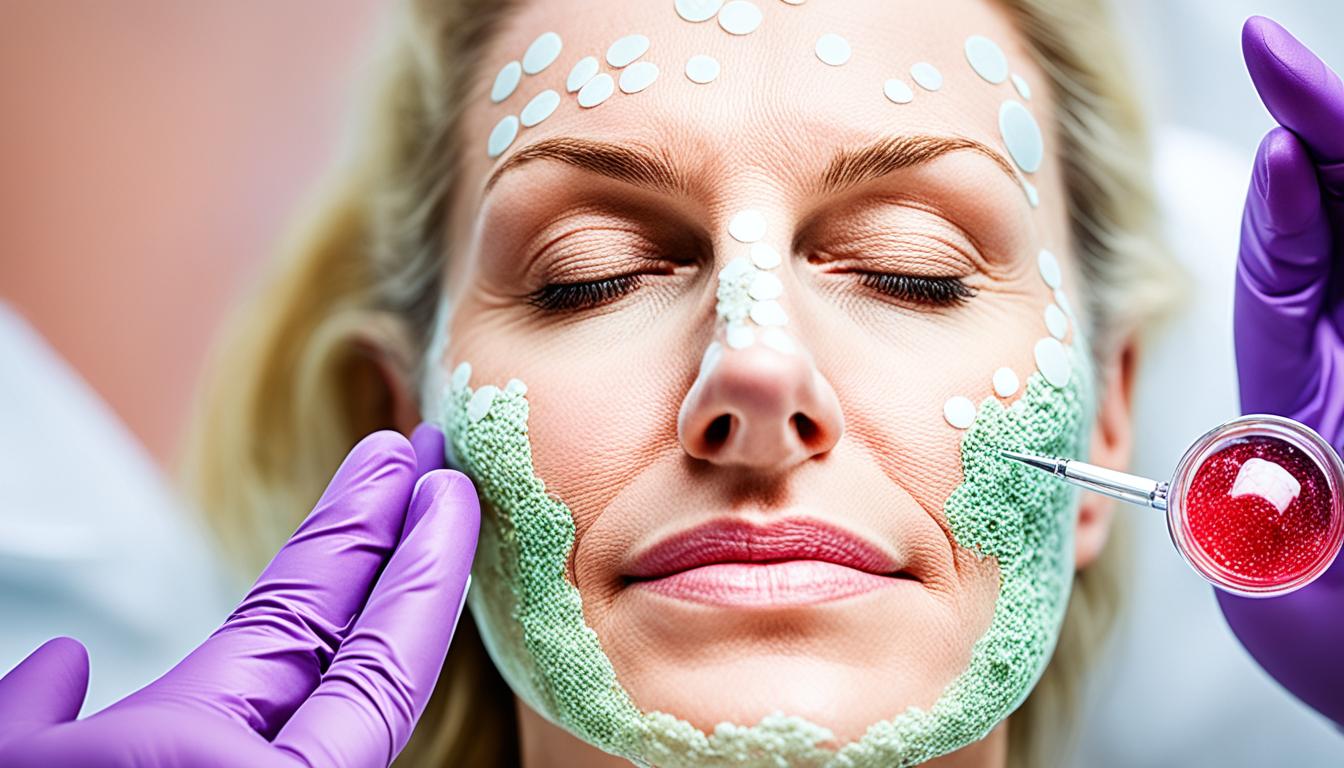Genital warts are caused by the human papillomavirus (HPV) and are common sexually transmitted infections. They appear as small, fleshy bumps on the genitals or anus. Besides physical symptoms, HPV can raise the risk of some cancers.
A doctors diagnoses genital warts with a visual check. They might also do a Pap smear, a DNA test, or take a biopsy. Although there is no cure for HPV, treatments like removing the warts or using topical destruction methods are available.
Stem cell therapy is an evolving treatment for genital warts. It uses the power of stem cells to boost the body’s immune system. This can help heal the affected area. Stem cell therapy looks promising as it is non-invasive and could be more effective.
Key Takeaways:
- Genital warts are caused by the human papillomavirus (HPV) and can cause physical discomfort and emotional distress.
- Symptoms of genital warts include small, fleshy bumps or growths on the genitals or anus.
- Diagnosis of genital warts usually involves visual examination and tests for the presence of the virus.
- Treatment options for genital warts include physical ablation and topical treatments.
- Stem cell therapy is an innovative approach that shows promise for the treatment of genital warts.
Symptoms of Genital Warts
Genital warts look different for everyone. They can be tiny, flesh-colored bumps or larger clusters. Some look like a small cauliflower. Men might see them on their penis, scrotum, anus, or upper thighs. Women often find them near the vagina, cervix, anus, or upper thighs.
Feeling itchy, irritated, or sore in your private parts could mean you have genital warts. These feelings are not just uncomfortable, they can also worry you. However, not everyone sees these warts. Some people may have them but not even know.
Key Symptoms of Genital Warts:
- Small, fleshy bumps or growths
- Clusters of growths
- Skin-colored, whitish, or slightly darker appearance
- Resembling a small cauliflower
- Appearing on the penis, scrotum, anus, upper thighs (in men)
- Appearing around the opening of the vagina, on the cervix, anus, upper thighs (in women)
- Itching, irritation, and discomfort in the genital or anal area
- Some individuals may not experience any visible symptoms
Knowing how genital warts look and the early signs is crucial. This way, you can get the right help. If you think you have them, see a doctor. They can tell you what to do next.
| Men | Women | |
|---|---|---|
| Common Areas of Appearance | Penis, scrotum, anus, upper thighs | Opening of vagina, cervix, anus, upper thighs |
| Appearance | Small, fleshy bumps or growths | Small, fleshy bumps or growths |
| Color | Skin-colored, whitish, or slightly darker | Skin-colored, whitish, or slightly darker |
| Resemblance | Small cauliflower | Small cauliflower |
| Other Symptoms | Itching, irritation, and discomfort in the genital or anal area | Itching, irritation, and discomfort in the genital or anal area |
Causes and Diagnosis of Genital Warts
Genital warts come from the human papillomavirus (HPV), a common virus spread through sexual activity. This can be from vaginal, anal, or oral sex. It spreads even without visible warts. So, it’s crucial to have safe sex and use condoms.
Risks for getting genital warts are higher if you:
- Have sex without protection
- Have several partners
- Have a weak immune system
- Touch infected areas
- Don’t get the HPV vaccine
A healthcare provider usually uses a visual exam to diagnose genital warts. They check for warts on the genitals and anus. Sometimes, they might do extra tests to confirm or look for other HPV issues.
Common diagnostic tests for genital warts include:
- Pap smear: Cells are taken from the cervix or anus to look for HPV or changes that may show HPV.
- DNA test: This PCR test finds HPV genetic material in collected cells.
- Biopsy: Sometimes, a small tissue sample is taken and checked under a microscope to confirm genital warts or check for other problems.
If you’re sexually active or at risk for genital warts, regular testing for HPV is key. Early warning signs and treatments can stop issues and lower spreading risks.
Getting a genital warts diagnosis can be tough. But, knowing there are ways to treat it helps. The next part covers various treatments for genital warts, including stem cell therapy.
Stem Cell Therapy for Genital Warts
Stem cell therapy is a new way to treat genital warts. It uses the power of stem cells to fight the virus. The cells are put into the affected area, which helps the body fight the virus and heal.
This method is still being studied. But, it might be better than current treatments. It offers hope for new, effective ways to beat genital warts.
More research is needed to know how well this therapy works. Yet, it’s a big step in finding better ways to fight this infection. Stem cell therapy could be a game changer for treating genital warts.

